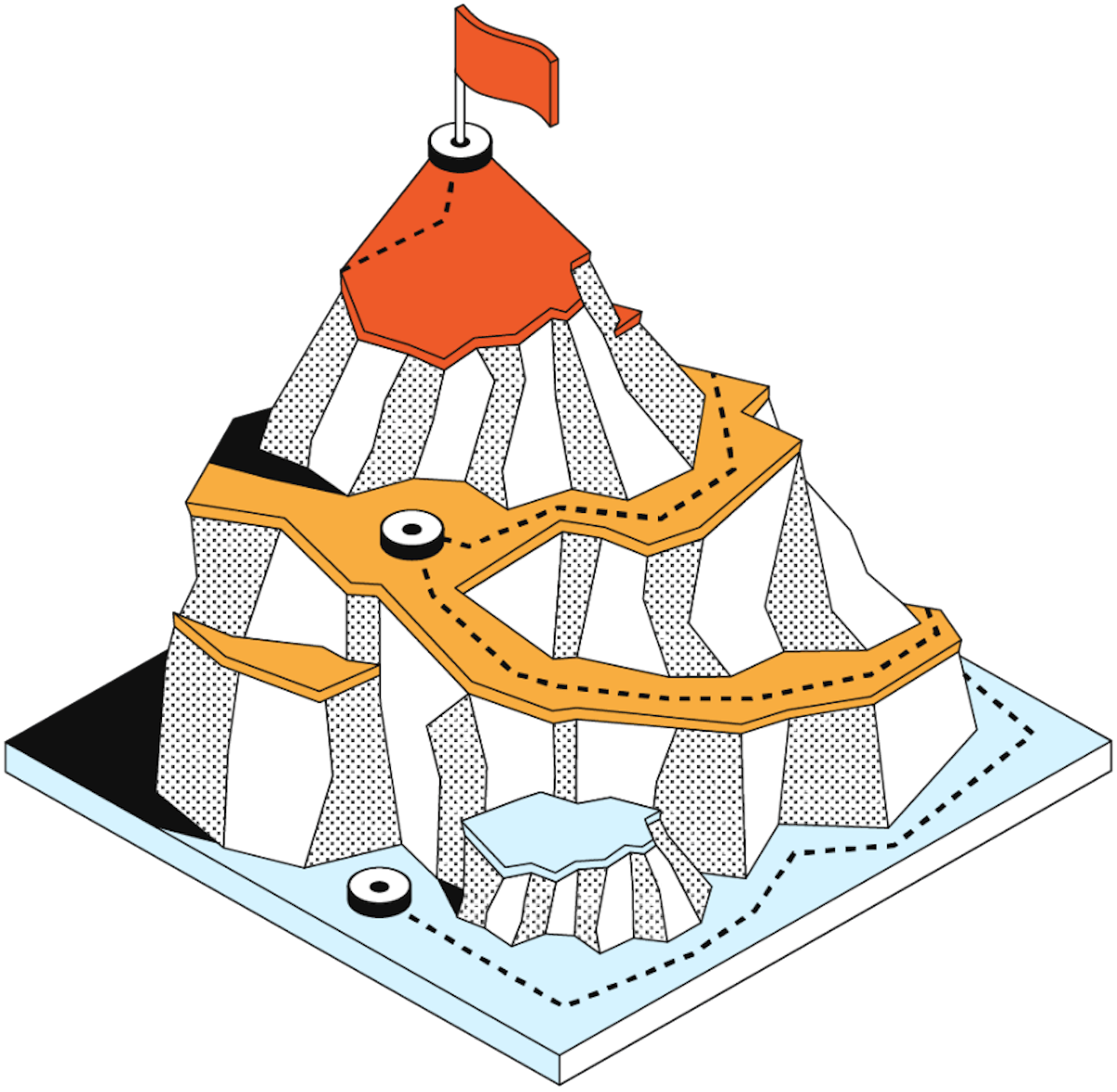Planning and OKRs: How to choose the right DRI for accountability.
Determining who runs the process, and identifying the traits that make for a quality OKR lead.


The Coda Team
Have you ever wondered how the President of the United States makes tough decisions? In his farewell address in 1953, President Harry S. Truman reflected on his two terms in office. He recounted the many affairs that arrived at his desk, where they awaited tough decisions.
“The President—whoever he is—has to decide. He can’t pass the buck to anybody. No one else can do the deciding for him. That’s his job.”
What is a DRI?
In our planning process at Coda, we require each key result to have a single DRI (directly responsible individual) or a driver accountable for moving the goal forward until it’s achieved. A key result driver is responsible for making sure that:- The KR is clearly stated and everyone involved understands it.
- The KR is frequently updated throughout the quarter as the team makes progress.
- If execution is blocked, the driver takes action to escalate and unblock the team.
What is a sponsor?
You have the teams. You have a driver. Now you need a sponsor for each KR. Sponsors are senior leaders who support the driver and broader team with advice, resources, and feedback. Sponsors often act as a sounding board and are the first point of escalation if execution gets blocked.How DRIs influence success.
It’s easy to lose sight of important tasks at a fast-growing company. Accountability and discipline are DRI superpowers that strengthen the way teams work together:- Removing ambiguity. DRIs ensure that everyone is clear about exactly who owns which task.
- Eliminating redundant tasks. Proactive efforts can sometimes result in duplicated (and wasteful) work. A DRI coordinates with the team to ensure their best work is collaborative, not siloed.
- Saving time. DRIs decide who needs to be invited to certain meetings or receive specific emails.
- Scaling decisions. DRIs can step into the meetings and emails to answer questions and delegate, unblocking the manager to focus on bigger issues.
How to choose a DRI for your project.
There isn’t a one-size-fits-all approach to choosing a DRI. The biggest requirement is that they’re able to get things done and take responsibility for their choices. While a DRI is not exactly the same as a project manager, they do share many of the same characteristics—the ability to track project progress, resilience in the face of adversity, and consistent reliability.How do we select our DRIs?
In most cases, for Coda, ownership usually aligns naturally with the person writing the OKR. For example, a DRI can be the primary engineer working on an integration or the author of a blog post. Sometimes, the choice of driver isn’t obvious. In that case, we use an “algorithm” based on the children’s fable, “The Chicken and the Pig,” to identify people fully committed to the project. In the story, a bacon and egg breakfast illustrates that a chicken is involved because it can bring eggs, but the pig is fully committed because in order to provide bacon, it is ultimately sacrificed. Chickens are involved, but the pigs are committed. Instead of selecting those who are just involved—those who consult on the project and are informed of its progress—we like to identify drivers who are totally committed to the project and accountable for the outcomes.What are the traits that are predictive of a successful DRI?
In addition to being fully committed to the project, our drivers are great leaders, exude strong communication skills, and are poised decision-makers. Whether it’s a project or a task, drivers tap into a blend of skills that can change rapidly from creating and writing the doc, to choosing invite lists and leading meetings. Here are a few traits of a great DRI:- Detail-oriented: A meticulous DRI keeps complex information organized by paying attention to all the moving pieces.
- Communicative: Informative DRIs constantly talk with project stakeholders so that everyone is updated—over-communication is key.
- Good listener: Perceptive DRIs are good listeners who know how and when to ask good questions.
- Resilient: DRIs can keep going even when things don’t go to plan.
- Action-oriented: A proactive DRI creates action items and tracks down to-dos from others.
- Meticulous: Diligent DRIs leave no stone unturned, showing great attention to detail and exercising care and precision.
- Reliable: Trusted DRIs are counted on to provide consistently high-quality work.
- Predictive: Perceptive DRIs foresee the future by anticipating problems before they happen and can quickly determine a path to success.
What are the roles and responsibilities of a DRI?
A DRI brings alignment to the OKR process for teams and shines a light on goals for the entire company. Drivers juggle several responsibilities that are crucial to OKR success, from planning to completion:- Planning: Write, maintain, and update OKRs.
- Benchmarking: Ensure metrics are good ones to capture the success of key results.
- Driving: Make key decisions, involve the right people, and escalate if things get blocked.
When do you know the DRI selection was successful?
The measure of a driver’s success at Coda is the completion of the OKR itself. Drivers are charged with momentum toward specific key results, goals, and tracking accountability along the way. It’s essential that drivers share the impact of metrics with everyone, so teams understand how they can rise above impractical goals. You can learn more about how we grade and measure our OKRs with this scoring guide.How to utilize drivers in Coda.
Coda is designed to support drivers every step of the way. Anything the driver needs to assign or track is simple to implement. In Coda’s OKR table, there is a new people column so that teams and sponsors can be added. Next, each person receives a notification that they are a part of the OKR process. Any async conversations that occur are reflected as notifications, ensuring that everyone is current. Coda’s integrations can meet people where they are––such as Slack––so that there is little feedback delay whenever OKR changes occur throughout the quarter.
Plan ahead in Coda.
Learn more about drivers and OKR processes in The Ultimate Coda Handbook for Planning and OKRs.Related posts
Explore more stories about planning and OKRs.












